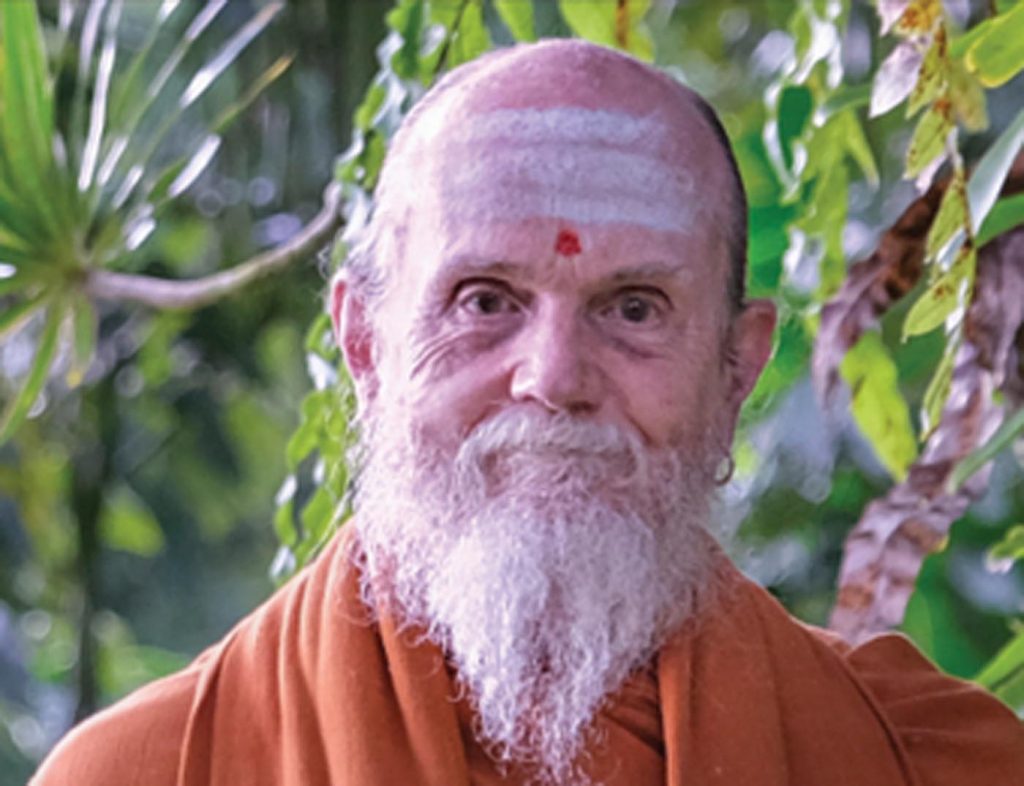Thank You!
We are missing the words to express how happy we are to receive your wonderful magazine in Kosovo c/o the Red Cross address in Switzerland as a courtesy of Kauai’s Hindu Monastery. In these difficult times, Hinduism Today is a breath of fresh air, and our gratitude is without limitation! For our very small Hindu community, every new issue of the magazine gives us so much opportunity to learn and enhance our sadhana and spiritual unfoldment. Pranams and Om!
RLP Group
Munchenstein, Switzerland
Reaching Out
I’ve been enjoying the magazine. Texas prison is about as far removed from the “Good Life” as I’d care enough to find myself. But the pictures and articles about people, places and things near and dear to my heart keep me warm inside. I would love to collaborate with anyone interested in setting up a Hindu pen-pal program. Some Christian churches do it and I think we Hindus could help “visit” with prisoners, too. I think people are largely uniformed or misinformed about the legally convicted. I would be happy to help transform doubts or fears into confidence for the spiritual renaissance these souls are destined for. When I came to prison, I encountered meditation. I studied and practiced devotedly. I had a genuine spiritual experience when praying to Brahma, Vishnu and Shiva. I enjoy darshana with the Deities as They see fit, in Their Time, on Their Terms.
Mathew Sean
Texas, USA
Kudos
“Unusual Temples & Shrines of India” (Oct. 2021) is a great article that starts, reads and ends like a enthralling story. The content, its organization and the accompanying images are presented clearly and precisely. Thank you very much, Anuradha, for this awesome article.
Jayanthi Vittal
jiant1596@gmail.com
A Correction
Hari OM. Sir, I have been reading Hinduism Today almost from the time of its inception, enjoying your diligently well-written articles on Hindu dharma, philosophy, spirituality and festivals celebrated all over the world. Naturally, the article in page 17, “From the Upanishads” (Jan. 2022) attracted me. Though it is well quoted from the 7th chapter of Chandogya Upanishad, the teaching is not by Uddalaka Aruni to his son Shvetaketu. The conversation is actually Sanat Kumara teaching his younger brother Narada Muni. The discourse between Uddalaka Muni and Shvetaketu is in the sixth chapter, where the “Tatvamasi” mahavakya was taught. That is a small correction. Salutations.
Dr. Raghu Grandhige,
President Chinmaya Mission, Atlanta, GA
gvraghumd@yahoo.com
Debating the Meaning of Yoga
I need to disagree with Pradeep Srivastava’s letter to the editor in the October/November/December 2021 issue in which he countered my assertion that “the meaning of yoga in Patanjali’s Yoga Sutras has nothing to do with joining.” While I agree that “union” is one of the definitions of yoga, it is not the one that Patanjali uses in his text.
There are numerous definitions for the word yoga in the unabridged Apte Dictionary, one of which is 1) “joining” and another is 2) “application or concentration of the thoughts, abstract contemplation, meditation, (esp.) self-concentration, abstract meditation, and mental abstraction practiced as a system (as taught by Patanjali and called the Yoga Philosophy).” So, even the dictionary says that the definition of yoga used by Patanjali is meditation, not union.
In his second sutra Patanjali states, “Yogash chitta vritti nirodhah,” which means “Yoga is the stilling of the fluctuations of the chitta/mind-stuff.” When your mind is stilled, you are meditating; you aren’t joining anything. This is also emphasized by Vyaasa in his commentary on the first sutra when he states “yoga is samadhi.” This is unequivocal. Again, not union.
The word yoga does come from the Sanskrit root word yuj. But there is more to it. From page 147 and 148 of Swami Veda Bharati’s translation and commentary: “The word [yoga] can be derived from yuj in several forms as follows: 1) yuj of the fourth conjugation (yujyate), meaning ‘samadhi;’ 2) yujir of the sixth conjugation (yunakti), meaning “samadhi;” 3) yuj of the tenth conjugation (yojayati), meaning “to join” or “to restrain,” or “to keep under control, as in yoking.”
The English word yoke is acknowledged by the Oxford English Dictionary to be cognate to yuj, and so is the word join. Yoke is derived from the third yuj in the above list. Join is from the second, but its meaning is from the third. According to Vyaasa, “the word yoga in Patanjali is derived not from the yuj of yoking or joining, but from the verbs meaning samadhi.”
Kurt Matthys
West Chester, Ohio, USA
kurt_matthys@yahoo.com
Bringing Biogtry to Light
I would like to praise Dr. Julie Rajan’s intelligent and compassionate rebuttal, (Jan/Feb/ Mar 2022) to Pat Robertson’s and his son Gordon’s hateful and demonic attacks against Hindus. I was raised a Christian myself, but I find an intimate compatibility at the level of my soul and my own consciousness to the Hindu Gods, Brahman priests, Hindu monks and nuns, and the Hinduism Today magazine. I believe Dr. Rajan is correct: verbal atrocities against Hinduism and other religions should not be tolerated in America, where we have freedom of religion and many of us welcome Hindus by rolling out the red carpet for their auspicious entry to the US. Yes, we should report Pat and Gordon Robinson’s hateful attitudes to the Justice Department Hate Crimes Division, and to the Anti-Defamation League. As Dr. Julie Rajan points out, Ms. Nancy Israel of the American Jewish Committee once noted that “Robertson is slowly being forced to back off with his hate by pressure from the “public spotlight.” Dr. Rajan concludes if we don’t ethically respond to ignorant and hateful words, “we will one day face more than Mr. Robertson’s hateful words.”
Will M. Davis
willdavis108@gmail.com
14 Questions People Ask
Dear team members at Hinduism Today: Kudos to all of you for bringing out such a sterling issue filled to the brim with articles and features that are relevant and crucial for Sanatana Dharma to remain current and vital in the 21st century and beyond. It is particularly noteworthy that many of them are written by the younger generation, who will carry the torch forward. My wife and I run a dance school in Malaysia called Kshetra Academy, teaching Bharatanatyam for the last 30 years. My wife, who does all the teaching, is incessantly bombarded with questions about Hinduism. As teachers, it is our duty to answer these questions correctly and convincingly. In this connection, “Fourteen Questions People Ask About Hinduism” (Jan. 2021) is a fantastic write up. Could you kindly send us a pdf of the article so we can distribute it to our students? [Link: bit.ly/basics14questions] Most are in the secondary school and pre-university student age group.
Ram Gopal Sivadas
ramgopalsivadas@gmail.com
Excellent 14 Q&As! I like the introduction about how to answer these questions with a smile. I run the Hindu Speakers Bureau (HinduSpeakers.org), and this will be an excellent resource for us. If you are interested in going and talking to local schools about Hinduism, join us. Thank you, Hinduism Today.
Dr. Dilip Amin
HinduSpeakers.org
HinduSpeakers@ishwar

Why Do Hindus Wear a Dot on their Forehead?
The dot worn between the eyes or in the middle of the forehead is a sign that one is a Hindu. It is called the bindi in the Hindi language, bindu in Sanskrit and pottu in Tamil. The dot has a mystical meaning. It represents the third eye of spiritual sight, which sees things the physical eyes cannot see. Hindus seek to awaken their inner sight through yoga. The forehead dot is a reminder to use and cultivate this spiritual vision to perceive and better understand life’s inner workings—to see things not just physically, but with the “mind’s eye” as well. The bindi is made of red powder (called sindur, traditionally made from powdered turmeric and fresh lime juice), sandalpaste or cosmetics. In addition to the simple dot, there are many types of forehead marks, known as tilaka in Sanskrit. Each mark represents a particular sect or denomination of our vast religion. We have four major sects: Saivism, Vaishnavism, Shaktism and Smartism. Vaishnava Hindus, for example, wear a v-shaped tilaka made of white clay. Elaborate tilakas are worn by Hindus mainly at religious events, though many wear the simple bindi, indicating they are Hindu, even in the general public. By these marks we know what a person believes, and therefore know how to begin conversations.
From “14 Questions People Ask about Hinduism” Hinduism Today (Jan/2022)
How Hinduism Today’s Premier Quality is Invaluable Today
One reason Hinduism Today deserves your support: its journalistic integrity
By Satguru Bodhinatha Veylanswami publisher of Hinduism Today.

Mostly due to free social media and ad-driven news sources, the world has access to a wealth of information on virtually all subjects today, including extensive coverage of current events. This is very good. But at the same time, the accuracy of today’s journalism is often questioned. Much is seen to be biased and laced with a spirit of intolerance and belligerence. Along with useful information comes a slew of misinformation, disinformation and misrepresentation. Good journalism that one can trust has become as elusive as it is greatly needed.
Hinduism Today has strived for this excellence ever since its launch, and it has often been praised for achieving it. One reader told us, “What I like about your magazine is that it’s clean, it has no hidden agendas.”
We do believe that 1) Hinduism Today has provided irreproachable coverage of Hindus, Hinduism and related topics these past 42 years, 2) that in our current times and climate, Hinduism Today may be especially appreciated for its journalistic integrity, and
that 3) it deserves and needs to be supported for that very reason.
Every Hindu order serves society, be it by establishing and managing priest-training gurukulams, hospitals, eye clinics, orphanages, schools or feeding centers. At Kauai’s Hindu Monastery, the principal public service consists in producing and distributing Hinduism Today international magazine, with the ultimate purpose of uplifting and informing Hindus and like-minded souls everywhere. The integrity of our journalism is essential to our mission.
Here are a few of our basic policies:
- to be always objective, fair, balanced, positive and uplifting
- to put forward religious leaders of all Hindu sects positively, highlighting their successes in uplifting Sanatana Dharma
- to present the glories of this great and ancient faith
- to put forward tradition itself, showing its value even in modern times
- to remain strictly nonpolitical
- to give a voice to cultural, artistic and spiritual leaders as well as to the common woman, man and youth and, especially:
- to promote Hindu solidarity among all denominations and lineages
Help fortify Hinduism Today‘s finances so that the magazine continues to be Hinduism’s strong, clear voice.
Donate at: bit.ly/help-HT.
Or contact us at:
+1-888-464-1008 • support@hindu.org
